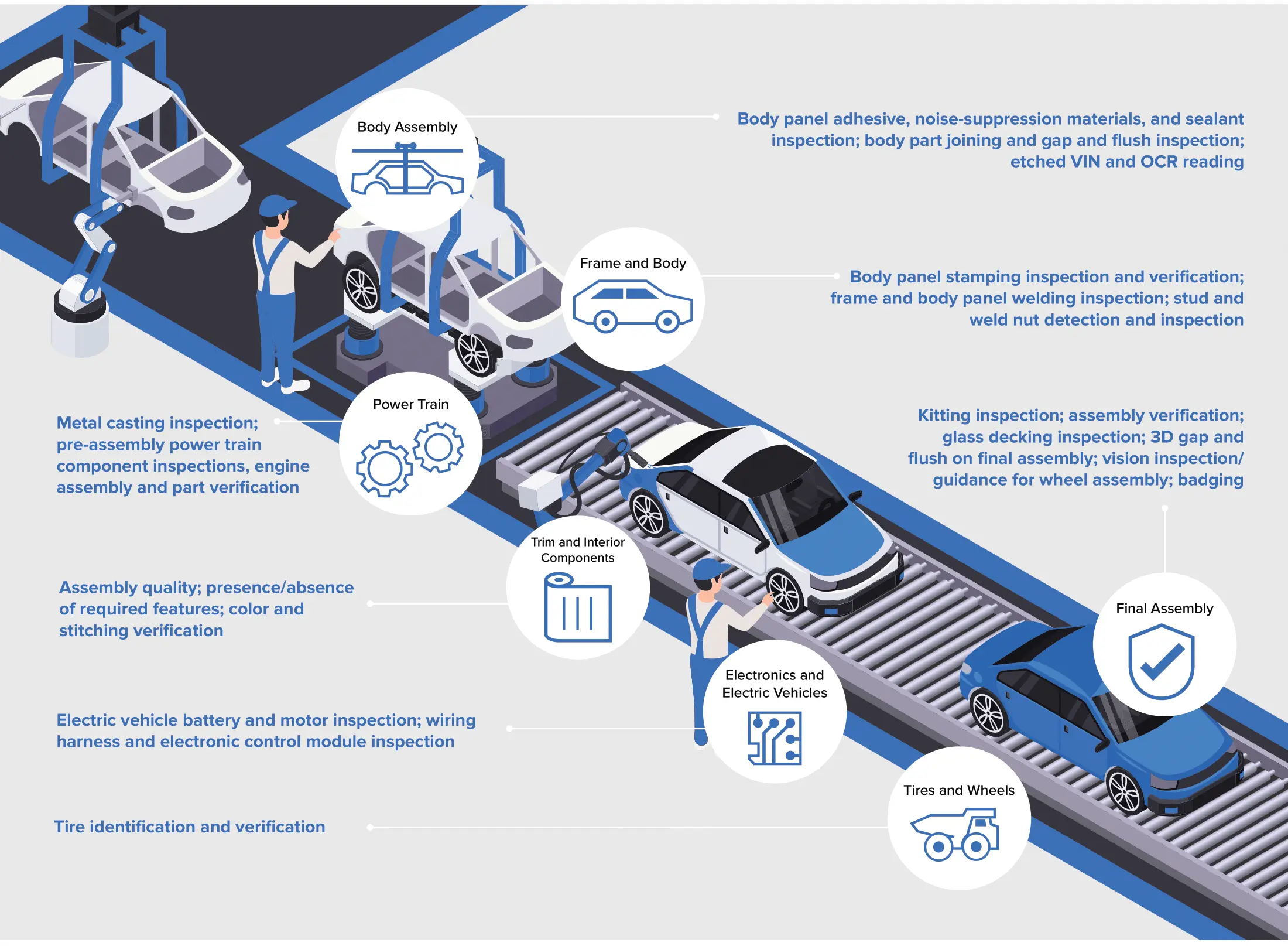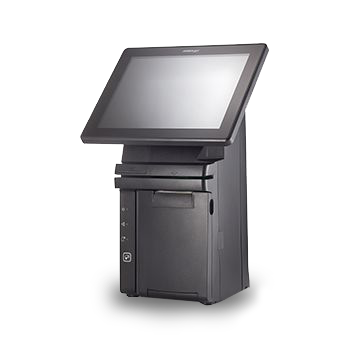Future of Automotive Manufacturing
Future of Automotive Manufacturing
As the pandemic’s immediate effects wane, automobile manufacturers are rapidly adapting to a host of emerging industry challenges. These include escalating consumer expectations, a surge in demand for custom manufacturing, ongoing supply chain disruptions, and an accelerated shift towards electric vehicles (EVs). To navigate these complex dynamics, automotive manufacturers are increasingly turning to machine vision technology. This innovative technology plays a crucial role in enhancing manufacturing efficiency and adapting to the new demands of the automotive industry.
Real-time Visibility and Enhanced Production Efficiency Machine vision technology is pivotal in achieving real-time visibility over moving parts within the production process. This visibility is critical as it allows manufacturers to monitor components and assemblies with unprecedented precision. Real-time data collected by machine vision systems enable manufacturers to detect and respond to issues instantaneously, preventing delays and reducing downtime. This capability is essential in maintaining the rhythm of carefully coordinated production lines, ensuring that each phase of the assembly process is perfectly synchronized.
Custom Manufacturing and Quality Assurance The rise of custom manufacturing presents another significant challenge, as consumers increasingly demand vehicles that cater to their specific preferences. Machine vision systems are uniquely equipped to handle these demands. By providing detailed inspections at various stages of the assembly line, these systems ensure that custom specifications are met accurately, enhancing product quality. Machine vision aids in maintaining high standards of quality assurance by systematically checking for defects or deviations from required specifications, thereby significantly reducing the margin for error.
Supply Chain Volatility Supply chain volatility has been a persistent issue, exacerbated by the pandemic and geopolitical tensions. Machine vision technology assists manufacturers in adapting to these fluctuations through enhanced inventory management and part verification processes. By automatically identifying parts and tracking inventory levels, machine vision systems can help stabilize production schedules and optimize supply chain operations, even in unpredictable circumstances.
Scaling Up EV Production As the demand for electric vehicles continues to grow, automakers must adjust their manufacturing processes to accommodate new technologies and components specific to EVs, such as batteries and electric drivetrains. Machine vision technology is integral in this transition. It supports the precise assembly of EV components, ensuring that each element is installed correctly and efficiently. This technology also facilitates the implementation of new production lines or the modification of existing ones to meet the specific needs of electric vehicle manufacturing.
Automation and Labor Efficiency With ongoing labor challenges and the need to accomplish more with fewer workers, automation becomes increasingly crucial. Machine vision is at the heart of many automation solutions, enabling robots and automated systems to perform complex tasks with high precision. For instance, in welding and painting operations, machine vision guides robots to perform tasks consistently and accurately, reducing the reliance on human labor and minimizing human error.
Future Outlook Looking forward, the integration of machine vision technology in automotive manufacturing is set to expand further. As manufacturers face continued pressure to innovate and improve efficiency, the capabilities of machine vision systems will become even more valuable. These systems are likely to evolve, incorporating advanced artificial intelligence algorithms that enhance their ability to learn and make decisions, thereby driving further efficiencies in automotive production.
In conclusion, as automobile manufacturers adapt to post-pandemic challenges and shifting industry demands, machine vision technology stands out as a critical ally. By enhancing real-time visibility, supporting custom manufacturing, stabilizing supply chains, facilitating the rise of EVs, and enabling higher automation, machine vision is not just a tool for adaptation; it is a cornerstone of future-ready automotive manufacturing strategies..
By Pos Qatar
Future of Automotive Manufacturing





